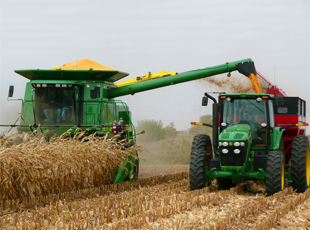Produce traceability: what growers need to know
Produce traceability details for growers to understand tracking requirements.
 Produce Traceability Initiative (PTI) adoption by large growers is required by large retailers. For many small and midsized growers, the retail markets they supply may not require PTI. Understanding the requirements for tracking produce from the farm field to its final destination can be incredibly confusing. Michigan State University Extension advises growers to keep track of the following information from harvest to the time it is sold.
Produce Traceability Initiative (PTI) adoption by large growers is required by large retailers. For many small and midsized growers, the retail markets they supply may not require PTI. Understanding the requirements for tracking produce from the farm field to its final destination can be incredibly confusing. Michigan State University Extension advises growers to keep track of the following information from harvest to the time it is sold.
Date of harvest
Whether a grower uses Produce Traceability Initiative or not, the date produce is harvested should be recorded. Growers may wish to use the Julian date to encode this information as part of an overall tracking code. Julian dates are the numeric equivalent of the day of the year. For instance, the Julian date for February 27th is 058. This means that February 27th is the 58th day of the year. By using Julian dates, the grower can easily encode the harvest date into an overall tracking number.
Harvest crew or work group that harvested the crop
For larger growers with multiple harvest crews, being able to narrow down who harvested the crop is an essential part of the traceability record. In the case of small growers with only one designated harvest crew or person, this information need not be encoded in a tracking number, but should be listed at least once in the food safety manual under traceability.
Field Location
Produce traceability from each field unit is needed for larger farms with multiple field units to be able to identify all produce from a particular unit and recall it if necessary. Having a general map of the area with all field units identified is an important component of this identification. The map can be hand drawn and not to scale, but it should be accurate enough to be able to drive to the locations represented on them. For farms with only one field, it is still important to have a navigable map of that field as part of the food safety manual.
Crop harvested
It may seem self-evident, but including the general crop type is considered required for PTI as well as traceability programs for food safety compliance. If a grower is only concerned with meeting food safety guidelines, the general crop type is enough (i.e., tomato, apple, etc.) For PTI compliance, the Global Tracking Identification Number (GTIN) will specify the exact crop type usually more discretely.
By tracking these items, irrespective of the size of a farm, produce growers can implement some measure of produce traceability to enable a recall or meet the requirements of a food safety audit. Again, the buyer may wish that the grower is Produce Traceability Initiative compliant, which requires this information in a prescribed form and barcoded, but the information utilized for Produce Traceability Initiative includes these components.


